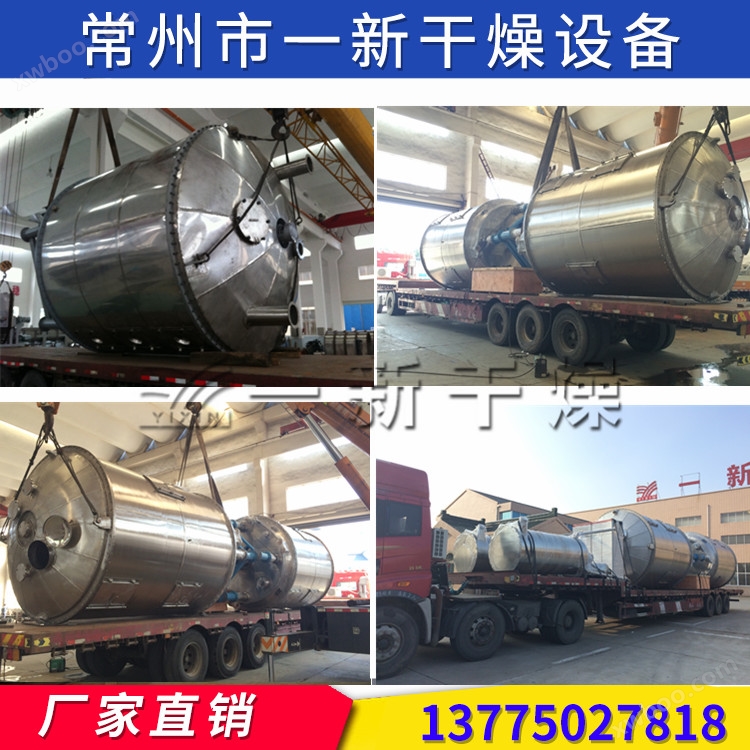1Material Overview
Lithium hydroxide is a white monoclinic fine crystal. It has a spicy taste. Strong alkalinity. It can absorb carbon dioxide and moisture in the air. Lithium hydroxide can be used as a developing agent and lubricating oil for spectral analysis.
Additive that can be used for alkaline battery electrolytes to increase capacitance12%~15%Improve the service life2~3Twice. Used for producing lithium salts and lithium based lubricants, electrolytes for alkaline batteries, absorption liquids for lithium bromide refrigeration machines, etc;When used for alkaline batteries, the aluminum content should not exceed0.06%Lead content not exceeding0.01%Used as an analytical reagent, photographic developer, and also in the manufacture of lithium;To be used as a raw material for producing lithium compounds. It can also be used in industries such as metallurgy, petroleum, glass, ceramics, etc.
2、 Equipment advantages
This time, our company is using the existing disc dryerDetails have been adjusted to better dry lithium hydroxide. Firstly, the connection structure of the rake blade part of the equipment has been changed, which has high flexibility and is easy to adjust according to the specific gravity of the material. At the same time, this design does not require dismantling the rake rod when repairing and replacing the rake blade; Due to the fine particle size of battery material powder, it is very easy for each layer of material to fall into the bottom layer during the falling process. Uneven drying can also cause fine powder to infiltrate the bearing. Our company has made special improvements to address this situationbottomA labyrinth seal has been added in the middle of the layer discharge tray, allowing the material on the upper surface to smoothly slide down the cone and enter the discharge tray, eliminating the possibility of micro powder entering the bearing; Secondly, the heat source of the disc dryer designed by manufacturers in the same industry is a single inlet, and there is a short circuit phenomenon in the heat source inside the disc, resulting in uneven heating of the materials on the disc surface. Our company's design is dual (multiple) inlet and dual (multiple) outlet, which makes the distribution of heat sources in and out more uniform, and the heat absorption of the disk material more sufficient, greatly improving the thermal efficiency.
3、 Equipment features
1 Continuous operation, high thermal efficiency. The disc type continuous dryer uses conduction heat transfer for drying. During the drying process, only a very small amount (or no air) is introduced into the dryer, and the amount of exhaust gas carried is very small. Therefore, its thermal efficiency can reach65%above.
2 Low power consumption and low noise. Due to the thin material layer and low spindle speed during the drying process, the material conveying system requires little power and consumes very little electricity. The power consumption of the entire drying device is only the power consumption of the convective heat transfer device1/5~1/7And the noise is very low.
3 The material is heated evenly and has a short drying time. Due to the rolling motion of the material along the Archimedean spiral trajectory in the drying disc during the drying process, the distance traveled by the material is equal to the radius of the drying disc5 Multiple times, and falling layer by layer, so the material contacts the heating plate for almost the same time, and the heating is very uniform.
4 Low cost of dryer system: With a huge heat transfer surface per unit effective volume, the processing time is shortened and the equipment size is reduced. This greatly reduces the building area and space.
5 Low environmental pollution: No use of portable air, minimal dust and material entrainment. The solvent evaporation of the material is very small, making it easy to handle. For materials that are contaminated or require solvent recovery, closed-loop circulation can be used.
6 Low operating costs: The device operates normally, only1 hour/day·People. Low speed stirring and reasonable structure. The wear and tear is small, and the maintenance cost is very low.
7 The drying process requires less gas and has a low flow rate, resulting in less dust being carried away by the gas. Therefore, the recovery of gas and dust after drying is convenient, and the recovery equipment is simple, saving equipment investment. For the drying process with solvent recovery, the solvent concentration in the gas can be increased, reducing the solvent recovery equipment or shortening the process









